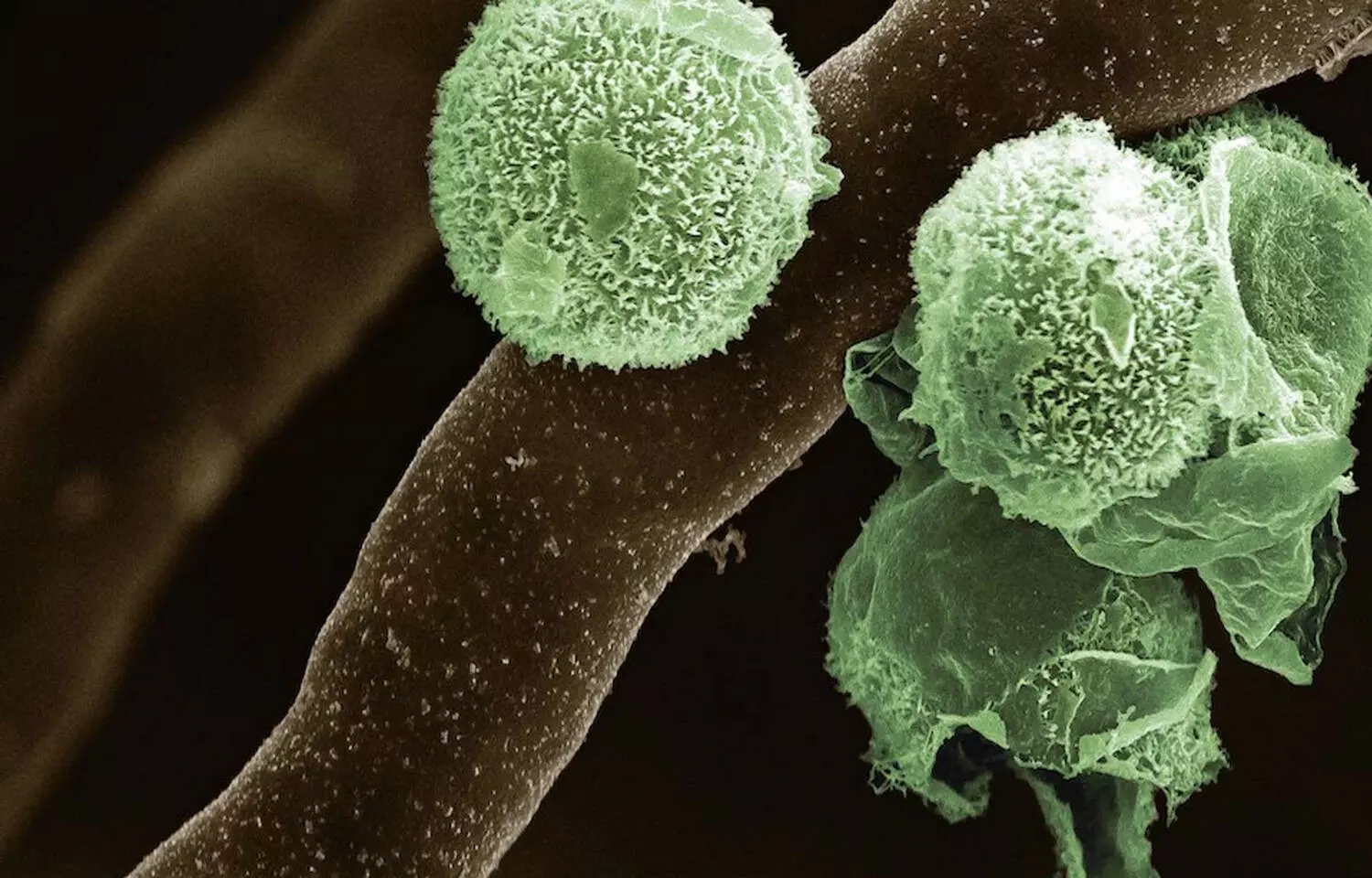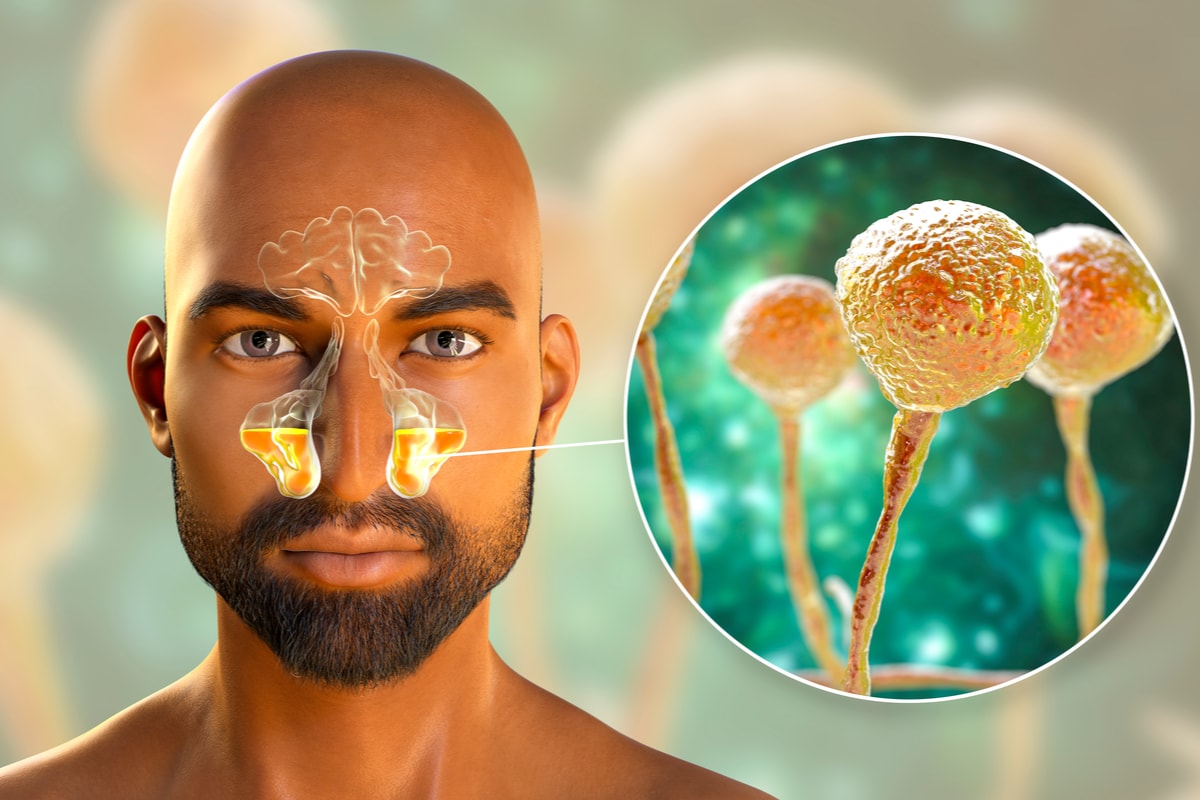The world panicked after India announced the detection of the first case of green fungus, which was for a citizen at the age of 34, who had recovered from infection with corona, as was the case for patients of the three previous types of fungi (black, white and yellow), coinciding with the wave. ferocious coronavirus.
In this context, the timesofindia website reviewed everything you need to know about green fungus disease, and we also reviewed the most prominent information about all types of fungi associated with corona infection that have recently appeared.
Those are Most Susceptible to Green Fungus Infection

Green fungus disease is a type of fungus called aspergillosis, which lives both indoors and outdoors, and people can get green fungus disease by inhaling microscopic aspergillus from the environment, and most of us breathe germs every day without getting sick, but those who suffer Those with a weak immune system or lung disease are more likely to develop health problems.
According to the US Centers for Disease Control and Prevention (CDC), allergic reactions, lung infections, and other organ infections are among the types of health problems caused by the germs between people and animals through their lungs.
The green fungus usually affects people who have other lung diseases such as tuberculosis.
The green fungus is called chronic aspergillosis in people usually with other lung diseases, including tuberculosis or obstructive pulmonary disease.
Green fungus disease affects people with weakened immune systems, such as people who have undergone a stem cell or organ transplant, who are receiving chemotherapy for cancer, or who take high doses of corticosteroids, and green fungus disease appears among patients with severe influenza in the hospital.
Symptoms of Green Fungus
The symptoms of green fungus are similar to those of asthma, including wheezing, shortness of breath, cough and (in rare cases) fever.
Among the symptoms of green fungus disease: congestion, runny nose, headache and poor ability to smell, symptoms include coughing, coughing up blood, shortness of breath, fatigue and weight loss.
Fever is a common symptom of a green fungus disease, which usually occurs in people who already have other medical conditions, and it may be difficult to know the symptoms associated with a green fungus infection, but symptoms of invasive aspergillosis in the lungs are fever, chest pain, cough, coughing up blood, and shortness in breathing.
Black Fungus
/1280px-Fungi_on_wet_soil_by_sankar-bad3072f0e8f47f196b9ce3b6bad43d5.jpg)
Last month, India announced the recording of a large number of cases infected with black fungus, followed by the announcement of a number of countries in the world, including Egypt, recording infections of this type, which is one of the worst types of nasal and sinus fungi.
This fungus is a very rare infection, caused by exposure to mucus mold, which is usually found in soil and decaying plants, and infection with this fungus begins in the sinuses or lungs and spreads to the bones and other tissues in the body, in the worst case, a black fungus infection can attack the eyes and brain It can be fatal in some cases.
Patients with weakened immune systems are more susceptible to infection with mucous fungi, according to health authorities in India, and this may include patients who have just recovered from the Coronavirus infection.
Fungus mostly affects surface areas of the body, such as the skin, but it also affects the interior parts of the body that come into contact with air. When people inhale the fungal spores, they enter the sinuses and spread to the airways deep within the body.
The fungus begins in the sinuses and spreads through the mucous membrane to the bone.
It can also travel through the bone to the eyes, orbit, muscles and nerves. Surgeons often have to remove an entire eye to save the patient’s life and is seen as the only way for doctors to remove infected tissue.
The initial symptoms are often very common red eyes or nose, and later, patients may have bloody or black discharge from the nose, possibly also a fever and may have difficulty breathing.
White Fungus

Also called candidiasis, is a fungal infection that affects the heart, blood, brain, or all parts of the body, according to the Centers for Disease Control and Prevention.
According to experts, the white fungus is more prevalent among patients with oral thrush, as the white fungus disease generally affects areas or parts of the body with a thin lining, or mucosal skin connections such as the lips, nose, inside the mouth and the genital area.
The chances of treating white fungus are greater compared to black fungus and its diagnosis is earlier than black fungus.
Yellow Fungus

Experts point out that a yellow fungus infection, unlike a black and white infection, can be even more frightening because of the way it affects the body’s internal organs.
The yellow fungus starts internally, causes slow wound healing, and in serious cases, can also cause devastating symptoms such as organ failure.
Therefore, it is still necessary for patients to seek help for infection as soon as they begin to notice symptoms.
One of its symptoms is lethargy. The fungal infection begins to spread internally and overburden the vital organs, leaving you without energy. This can lead to symptoms such as severe lethargy, fatigue and exhaustion.
Poor appetite. The spread of the fungal infection can also lead to digestive upset. Patients can suddenly report symptoms such as loss of appetite and poor eating habits.
Weight loss and poor metabolism Experts say unusual weight loss could be a sign that a person needs a medical exam, especially if they’re also showing symptoms similar to other fungal infections in their circulation right now.
It is important to know that most fungal infections of this type begin due to unsanitary conditions, poor hygiene, contaminated resources (including food), overuse of steroids or antibacterial drugs, or misuse of oxygen.
Patients still suffer from comorbidities or Those who use immunosuppressive medications are at greater risk of infection.

